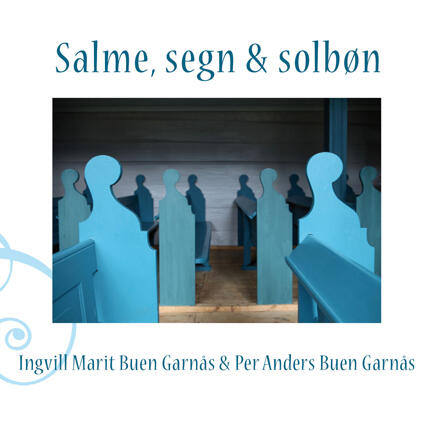In all ages, various religious movements have left their marks on Norwegian folk music and on the oral tradition attached to it. Pre-Christian and Catholic motifs have blended together and endured in songs and legends until long after the Reformation and on to the present day. Hymns and religious meeting house songs were gradually integrated into the folk song tradition, in some cases at the expense of older material. At certain points, folk singing and fiddle playing were regarded as the purest of sins; there have naturally also been tales about this.
The siblings Ingvill Marit and Per Anders Buen Garnås belong to a living folk music tradition. Stories about folk singers and fiddlers in their family are known dating back to the 1700s. Thus, they have firsthand knowledge of how religious conflicts have influenced tradition and repertoire along the way. Folklore collectors such as Magnus Brostrup Landstad (1802-1880) and Ludvig Mathias Lindeman (1812-1877) transcribed songs from legendary folk singers from various branches of the family.
The hymns on the album are largely in tradition after great-great-great-grandfather Knut H. Hovde (1806-1888) from Tuddal. He was a member of the lay religious movement founded by Hans Nielsen Hauge but sang the hymns in a folk singer’s manner. The repertoire was exchanged, but the singing technique remained intact. Furthermore, Ingvill Marit and Per Anders have a wide repertoire and background material from various tradition lines in Telemark. On this album, they have concentrated on material connected to religion and superstition. There are sun prayers, hymns, folk ballads, and fiddler’s tales of mysticism, wonder, faith, and misgiving. It is a historically interesting subject matter, but, at the same time, the melodies and stories excite and captivate to this very day.
The siblings Ingvill Marit and Per Anders Buen Garnås belong to a living folk music tradition. Stories about folk singers and fiddlers in their family are known dating back to the 1700s. Thus, they have firsthand knowledge of how religious conflicts have influenced tradition and repertoire along the way. Folklore collectors such as Magnus Brostrup Landstad (1802-1880) and Ludvig Mathias Lindeman (1812-1877) transcribed songs from legendary folk singers from various branches of the family.
The hymns on the album are largely in tradition after great-great-great-grandfather Knut H. Hovde (1806-1888) from Tuddal. He was a member of the lay religious movement founded by Hans Nielsen Hauge but sang the hymns in a folk singer’s manner. The repertoire was exchanged, but the singing technique remained intact. Furthermore, Ingvill Marit and Per Anders have a wide repertoire and background material from various tradition lines in Telemark. On this album, they have concentrated on material connected to religion and superstition. There are sun prayers, hymns, folk ballads, and fiddler’s tales of mysticism, wonder, faith, and misgiving. It is a historically interesting subject matter, but, at the same time, the melodies and stories excite and captivate to this very day.


